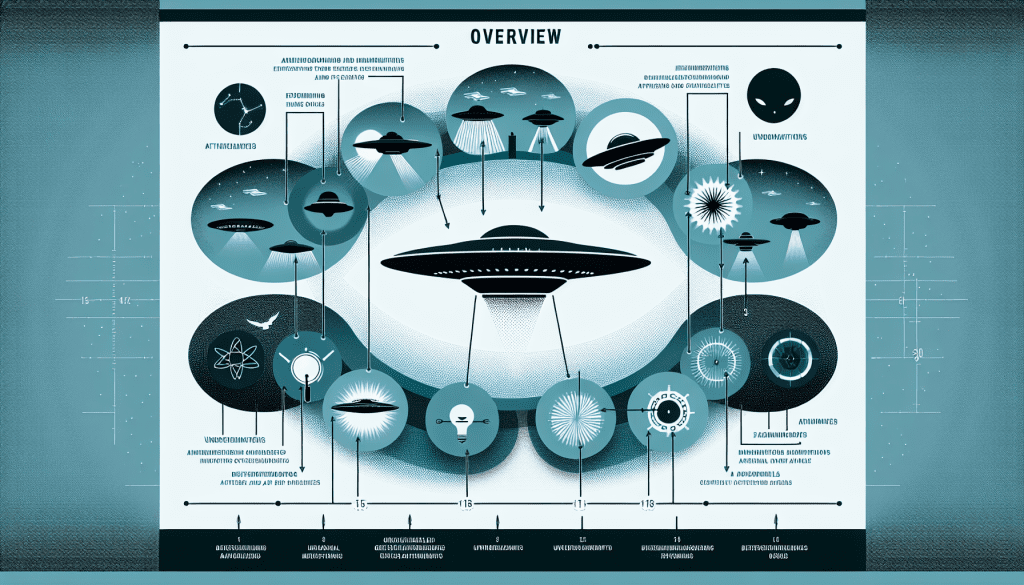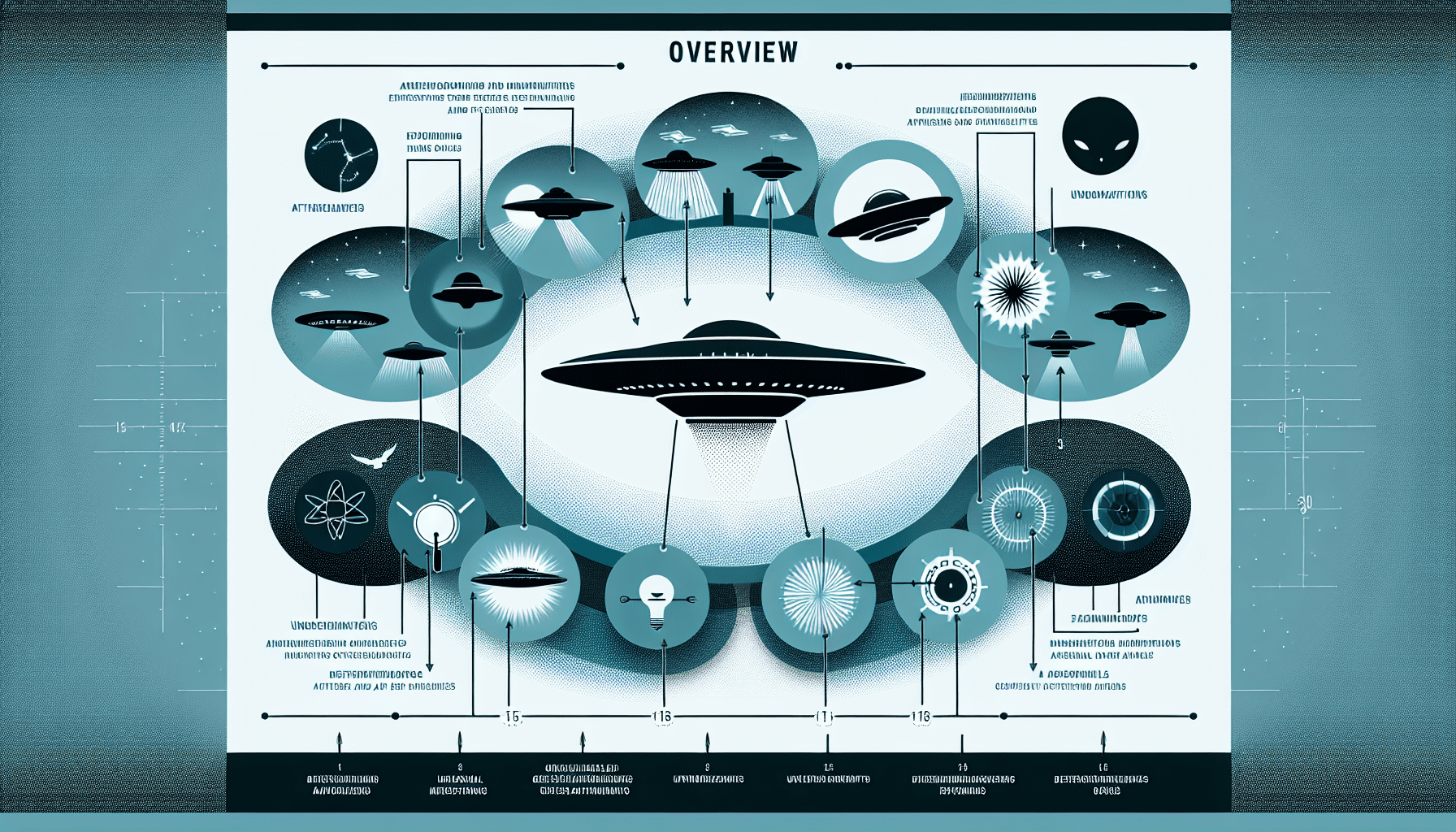Imagine staring up at the vast expanse of the night sky, filled with countless stars and mysteries waiting to be unraveled. If you’ve ever pondered the existence of extraterrestrial life, then you’re in for a treat! In this article, we will guide you through the fascinating world of UFO spotting. From knowing the best time to observe the skies to recognizing unusual flying objects, get ready to embark on an adventure of celestial proportions. So grab your telescope and let’s start decoding the secrets of the universe together. Brace yourself, for the heavens are about to reveal their enigmatic wonders to you.

Understanding UFOs
UFO, or Unidentified Flying Object, refers to any object or phenomenon that is seen in the sky but cannot be readily identified or explained. These objects may exhibit strange lights, unusual movements, or unrecognizable shapes. The term “UFO” does not imply that the object is of extraterrestrial origin, but simply that it cannot be identified using conventional knowledge or technologies.
Common characteristics of UFO sightings
UFO sightings often share certain characteristics that differentiate them from ordinary aerial phenomena. These include unpredictable patterns of movement, rapid acceleration or deceleration, and the ability to hover or change direction abruptly. Witnesses may also report seeing pulsating lights, unusual colors, or the absence of any sound. These consistent features help in distinguishing UFO sightings from other routine objects in the sky.
History of UFO sightings
Reports of UFO sightings stretch back throughout history, with accounts recorded in ancient civilizations such as the Egyptians and the Mayans. However, the modern era of UFO sightings gained significant attention in the late 1940s and early 1950s. One of the most famous cases is the Roswell incident of 1947, where an unidentified object crash-landed in New Mexico. Since then, numerous sightings have been recorded around the world, sparking widespread public interest and debate.
Preparing for UFO Spotting
To increase your chances of spotting a UFO, it is essential to select the right location, consider ideal weather conditions, and choose the appropriate time of day.
Choosing the right location
When selecting a location for UFO spotting, it is advisable to find an area with minimal light pollution and a clear sightline of the sky. Rural areas, away from city lights and tall buildings, often provide better visibility. Additionally, remote locations such as mountaintops or open fields offer an unobstructed view of the sky and increase the chances of spotting unusual aerial phenomena.
Ideal weather conditions
Weather plays a crucial role in UFO spotting. Clear skies with minimal cloud cover offer the best viewing conditions. While UFO sightings can occur at any time, it is generally easier to observe objects against a clear background rather than in a cloudy or hazy atmosphere. Pay attention to weather forecasts and plan your spotting sessions accordingly.
Time of day to spot UFOs
UFO sightings can happen during any time of day, but certain periods may offer a higher likelihood of sightings. Many enthusiasts believe that the twilight hours, around dawn or dusk, are optimal for observing UFOs. During these times, the sky is still dark enough to provide contrast against potential objects while allowing for enough light to see clearly.
Equipping Yourself for UFO Spotting
To enhance your UFO spotting experience, it is beneficial to equip yourself with the right tools, including binoculars or telescopes, camera equipment, and night vision devices.
Binoculars or telescopes
A pair of binoculars or a telescope can significantly amplify your ability to observe UFOs. These optical devices allow you to see distant objects in greater detail, enabling you to detect subtle features and movements that may go unnoticed by the naked eye. Invest in a quality pair of binoculars with a suitable magnification level to enhance your chances of spotting and identifying UFOs.
Camera equipment
Capturing visual evidence of UFO sightings is vital for documentation and analysis. Consider investing in a digital camera with a manual focus and adjustable settings, as this will provide greater control over capturing clear images of fast-moving objects. Additionally, a tripod can stabilize the camera and reduce blurriness, especially during nighttime photography.
Night vision devices
UFO sightings often occur at night, when the skies are darker and objects in the atmosphere stand out more prominently. Night vision devices, such as goggles or scopes, enhance your vision in low-light situations, allowing you to see faint objects or anomalies that may be invisible to the naked eye. These devices can be particularly useful for spotting UFOs in areas with minimal lighting or during overnight sky-watching sessions.
Identifying Potential UFOs
Distinguishing between ordinary objects and potential UFOs requires careful observation and consideration of several factors, including lights, movement patterns, and shape and size.
Unusual lights or movement patterns
Pay close attention to the lights emitted by the object in question. UFOs often exhibit lights that differ from conventional aircraft, such as pulsating or multicolored lights, erratic blinking patterns, or lights that appear to change intensity or color. Additionally, UFOs are known to move in unconventional ways, such as sudden stops, sharp turns, or rapid accelerations. If you observe these characteristics, it may indicate a potential UFO sighting.
Shape and size considerations
The shape and size of the object can provide valuable clues for identifying UFOs. While UFOs come in various shapes, some common forms reported include saucer or disc-shaped objects, cylindrical or cigar-shaped crafts, and triangular or diamond-shaped vessels. Keep in mind that the apparent size of the object can be deceiving, as distance and altitude can impact its perceived dimensions. Comparing the object to known references, such as clouds or nearby structures, may help gauge its size.
Recognizing Common UFO Sightings
While UFO sightings can take many forms, several types of objects are commonly reported, including cigar-shaped UFOs, triangular UFOs, and flying saucers.
Cigar-shaped UFOs
Cigar-shaped UFOs, also known as cylindrical UFOs, are elongated objects resembling large cigars or tubes. Witnesses often describe them as exhibiting smooth surfaces and sometimes possessing lights or distinct markings. These UFOs are known for their ability to hover or move silently, defying the flight characteristics of conventional aircraft.
Triangular UFOs
Triangular UFOs have gained significant attention in recent years due to their distinctive shape and unusual flight patterns. Witnesses report seeing triangular or delta-shaped crafts with lights at each corner, often referred to as the “triangle formation.” These objects are known for their agility and sudden changes in direction, defying known aircraft capabilities.
Flying saucers
The iconic image of a flying saucer remains one of the most widely recognized forms of UFO sightings. Witnesses often describe these objects as disc-shaped with a dome-like structure on top. Flying saucers are commonly associated with accounts of extraterrestrial visitations and have been an enduring symbol of UFO encounters.
Otherworldly Phenomena and UFOs
UFO sightings sometimes exhibit connections with paranormal activity, including possible links to paranormal encounters, crop circles, and abduction stories.
Possible connections with paranormal activity
Some UFO sightings involve experiences that go beyond visual encounters. Witnesses report close encounters, where they experience strange physiological or psychological effects, communication with unknown entities, or temporary missing time. These events may suggest a connection between UFOs and paranormal phenomena, leading some to believe that UFOs are not merely physical objects but part of a larger unexplained reality.
Crop circles and their association with UFOs
Crop circles, intricate patterns formed in fields of crops, have long been associated with UFOs. Some believe that these formations result from the landing or activity of extraterrestrial spacecraft. While skeptics argue that many crop circles are hoaxes, there remain unexplained cases with intricate designs that defy human capabilities, raising questions about their origins and possible link to UFOs.
Abduction stories and UFO encounters
A subset of UFO encounters involves alleged abductions, where individuals claim to have been taken against their will by non-human entities associated with UFO sightings. These accounts often include claims of medical examinations, telepathic communication, and missing time. While abduction stories are highly controversial, they add another layer of complexity to the UFO phenomenon and continue to fuel debates and investigations.
Reporting UFO Sightings
If you witness a UFO sighting, it is crucial to report it to the appropriate organizations and authorities to contribute to the ongoing research and documentation of these events.
Contacting local UFO investigative organizations
Many regions have local UFO investigative organizations dedicated to collecting and analyzing UFO reports. These organizations often have experience and resources to properly document and investigate sightings. Check online or inquire within your community to find the nearest organization and report your sighting to them.
Utilizing online reporting platforms
Online reporting platforms provide a convenient way to document and share UFO sightings with a wider community of enthusiasts and researchers. These platforms often have reporting templates that guide you through providing essential details, including date, time, location, and a description of the sighting. Sharing your experience online can contribute to the collective knowledge and understanding of UFO sightings.
Filing an official report with the authorities
While not all authorities accept UFO reports, it is still worth considering reporting your sighting to local law enforcement or government agencies. Depending on the region, these authorities may have dedicated departments or protocols for handling and assessing UFO reports. Even if they cannot directly investigate the sighting, they may keep records, which can contribute to future research efforts.
Debunking Misidentified Objects
Not all UFO sightings can be attributed to extraterrestrial activity. Many can be explained by a variety of other factors, including unexplained aerial phenomena (UAPs), military aircraft, experimental technology, and celestial bodies.
Unexplained aerial phenomena (UAPs)
Unexplained aerial phenomena, often referred to as UAPs, are sightings that defy immediate explanation but do not necessarily involve extraterrestrial involvement. These could include atmospheric anomalies, optical illusions, or unfamiliar scientific phenomena. Investigating potential UAPs can help differentiate genuine unidentified objects from misidentified or misunderstood phenomena.
Military aircraft and experimental technology
Military aircraft, including advanced and classified projects, can sometimes be mistaken for UFOs due to their unconventional appearance or flights. Many governments worldwide conduct classified military operations and test experimental technology. Prioritize researching and understanding local military activity to rule out the possibility of misidentifying known aircraft.
Celestial bodies mistaken for UFOs
Certain celestial bodies, such as stars, planets, satellites, or meteors, can give the impression of UFOs, particularly with unusual atmospheric conditions or low visibility. Familiarize yourself with the positions and movements of celestial objects in the night sky to avoid mistaking them for UFOs. Mobile apps or online resources can provide real-time information to help determine the celestial objects visible from your location.
Safety Considerations
While UFO spotting can be an exciting and intriguing activity, it is essential to prioritize safety and consider potential risks associated with the environment and your actions.
Observe from a safe location
Ensure you are in a safe location that allows you to spot UFOs without endangering yourself or others. Avoid high-risk areas such as cliffs, steep inclines, or precarious structures. Stay away from busy roads or any situation that may distract you from observing the sky attentively.
Avoid trespassing or entering restricted areas
Respect private property and adhere to any signage or instructions prohibiting access. Trespassing or entering restricted areas can result in legal consequences and pose personal risks. Always seek permission from landowners if necessary and prioritize your safety by avoiding areas that may harbor potential hazards.
Precautions while driving or operating machinery
If you choose to spot UFOs from a moving vehicle, ensure that you do so safely. Do not distract yourself with UFO spotting while driving, as it can compromise road safety. Likewise, avoid operating machinery or any equipment that requires your full attention while simultaneously observing the sky. Focus on your surroundings and only engage in UFO spotting when it is safe to do so.
Analyzing and Documenting UFO Sightings
Proper documentation and analysis of UFO sightings are crucial for research and further understanding of these phenomena. Follow these guidelines to ensure accurate and comprehensive reporting.
Taking detailed notes and sketches
As soon as the sighting occurs, take notes of important details, such as the date, time, and location. Describe the object’s appearance, including its size, shape, color, and any discernible features or movements. Sketches can also help illustrate its characteristics. Include any additional information, such as weather conditions, other witnesses, or significant environmental factors that could aid in understanding the sighting.
Recording photographs or videos
Whenever possible, capture photographic or video evidence of the UFO sighting. Use a steady hand or a tripod to minimize camera shake and ensure clear images. Zoom in or adjust the camera settings, if necessary, to capture as much detail as possible. Avoid relying solely on smartphone cameras, as they may have limitations when trying to capture distant objects.
Collecting witnesses’ testimonials
If others are present during the sighting, gather their contact information and encourage them to share their accounts. Collect firsthand testimonials, asking witnesses to describe what they observed in their own words. Having multiple witnesses can provide valuable corroboration and strengthen the credibility of the sighting.
In conclusion, UFO spotting can be an exciting and rewarding experience for those fascinated by the unexplained. By understanding the characteristics of UFO sightings, equipping yourself with the right tools, and following proper procedures for identification and reporting, you can contribute to the ongoing exploration and research of these mysterious phenomena. Remember to prioritize safety, document sightings accurately, and remain open-minded as we continue to unravel the secrets of the sky. Happy UFO spotting!

